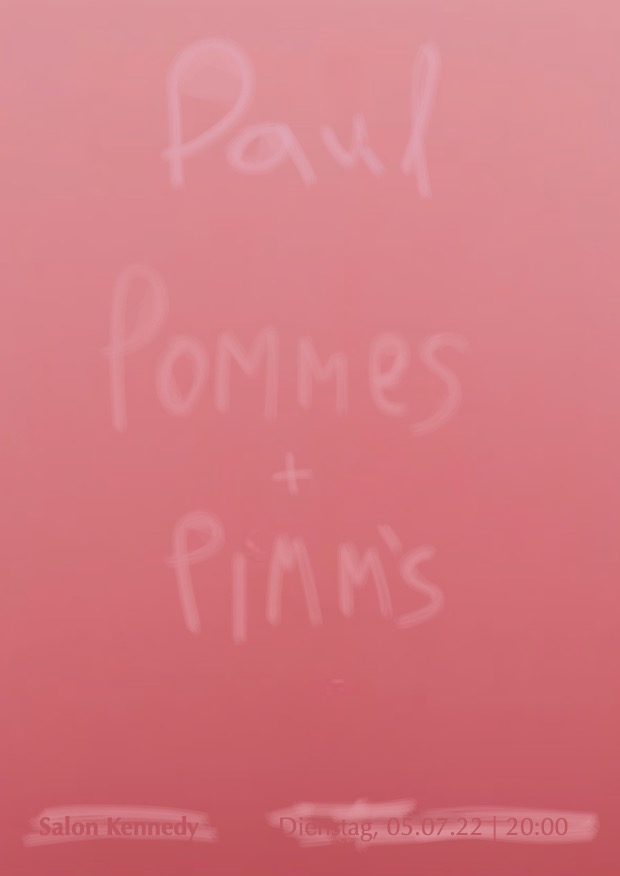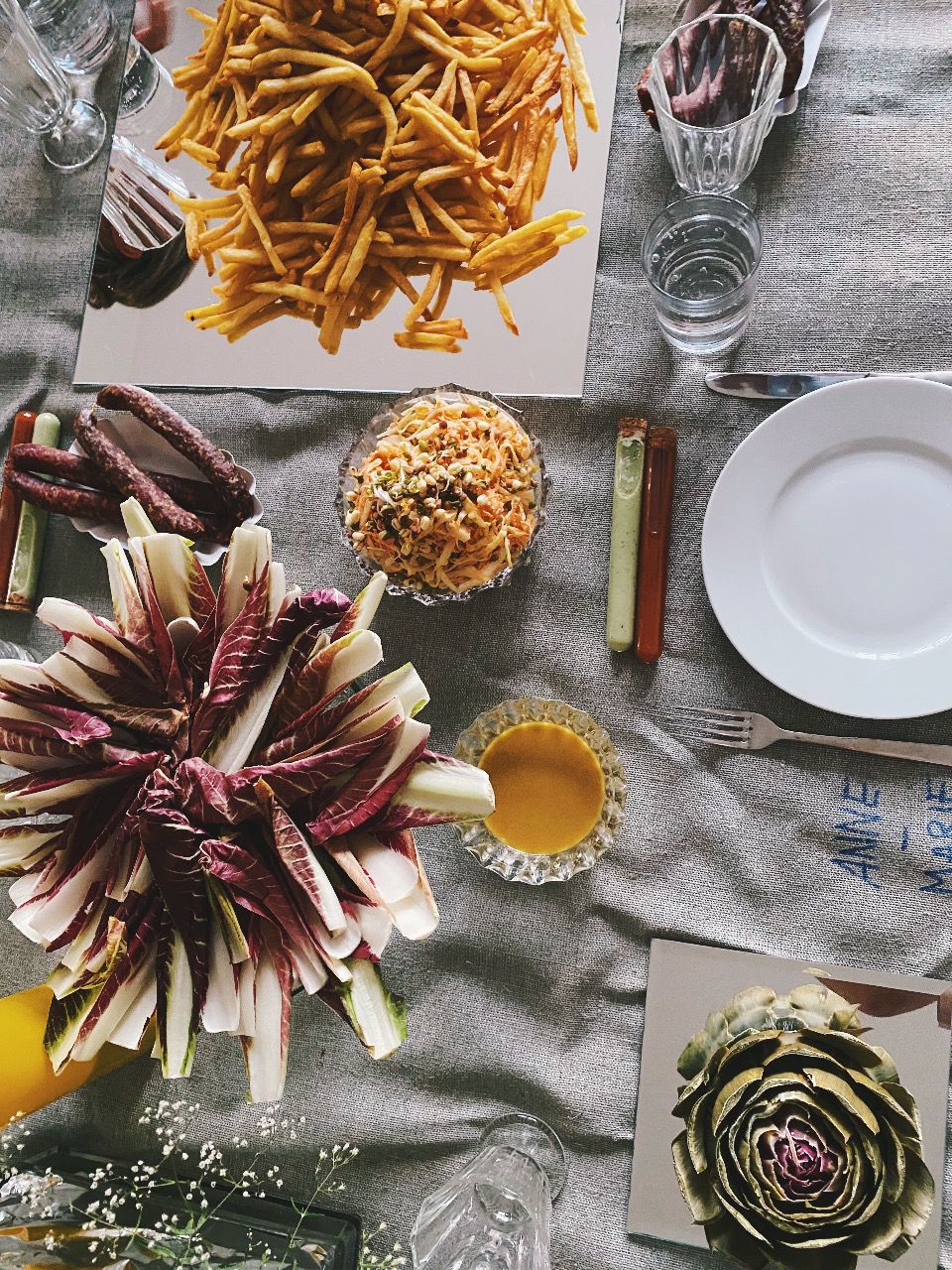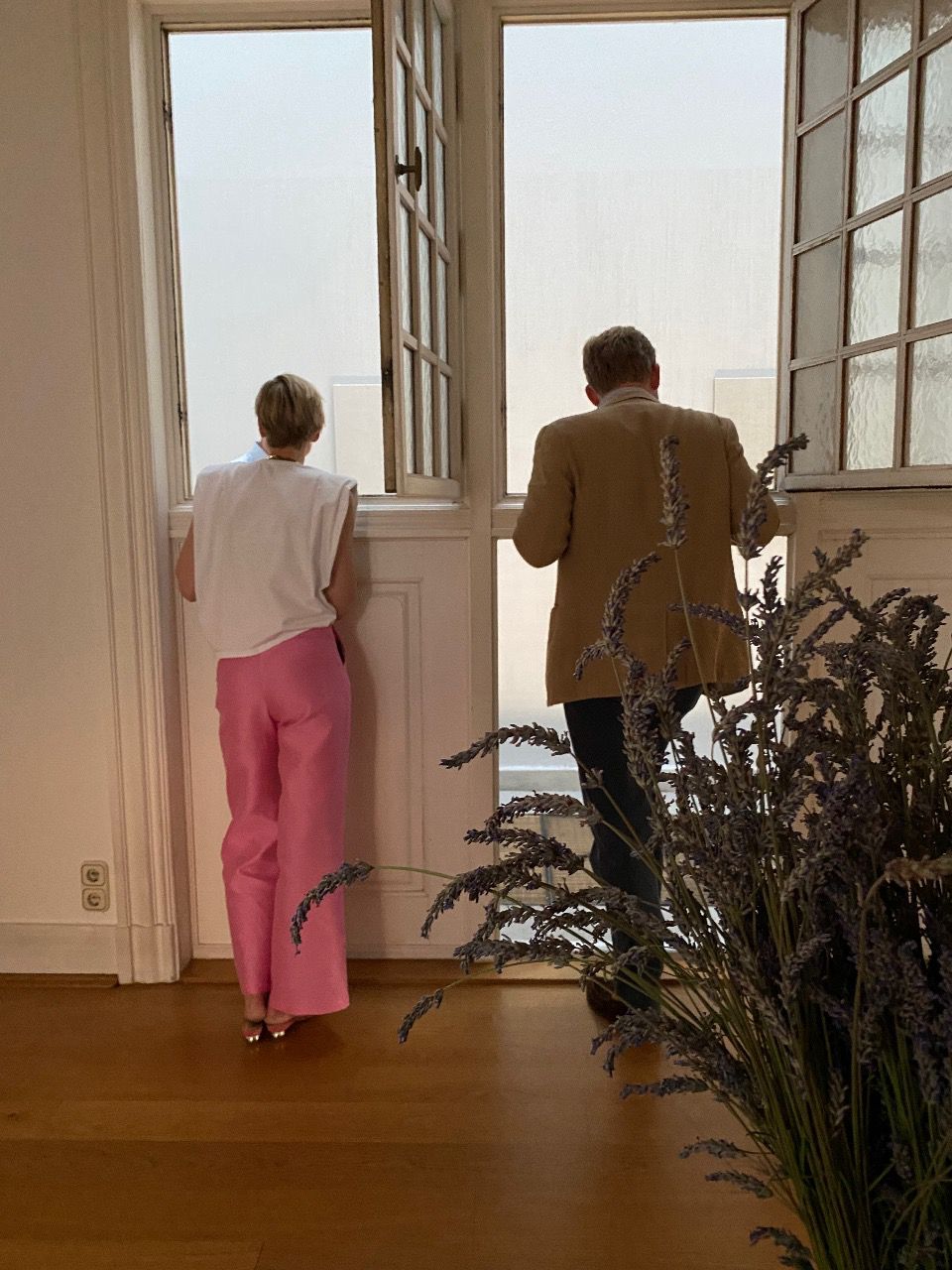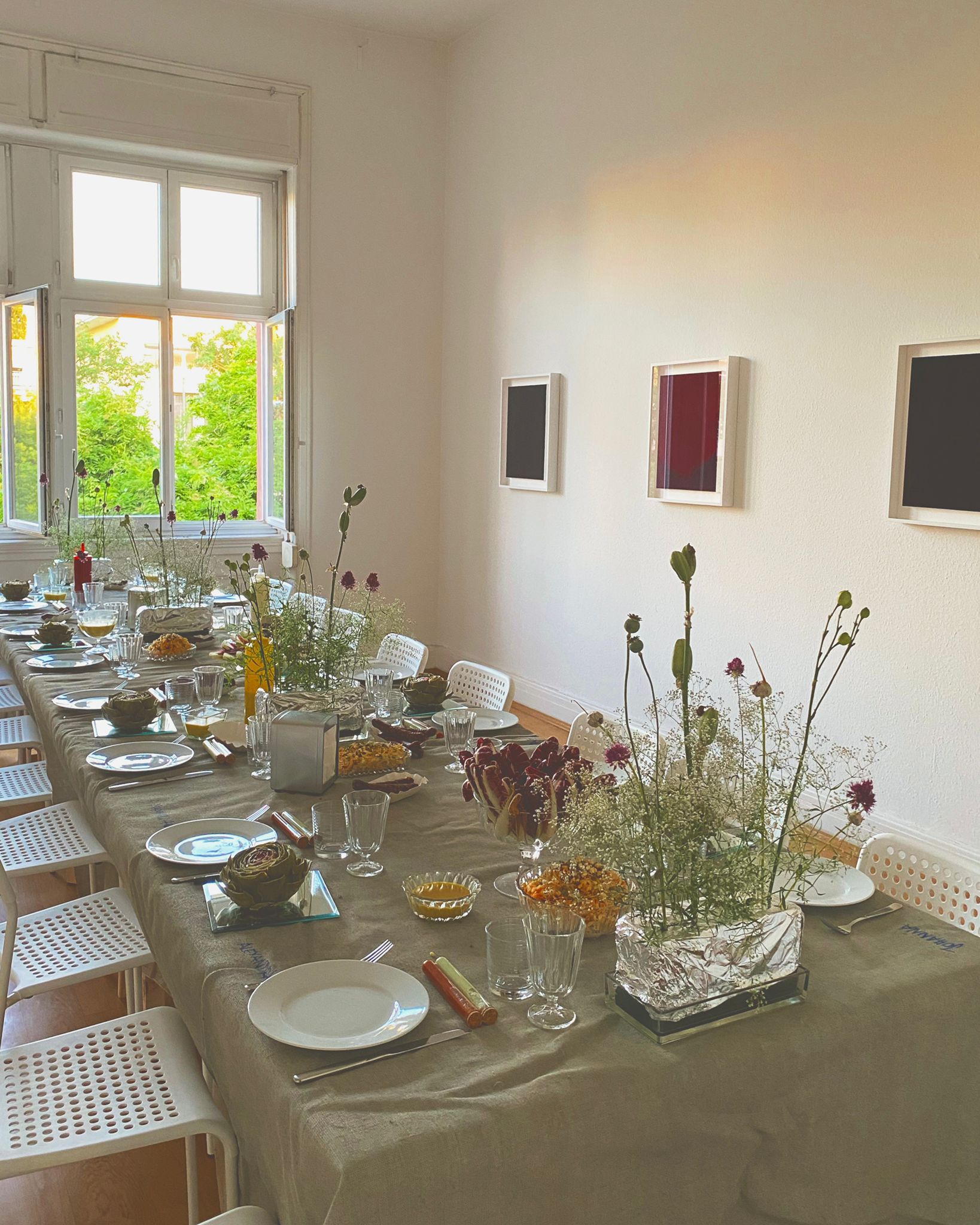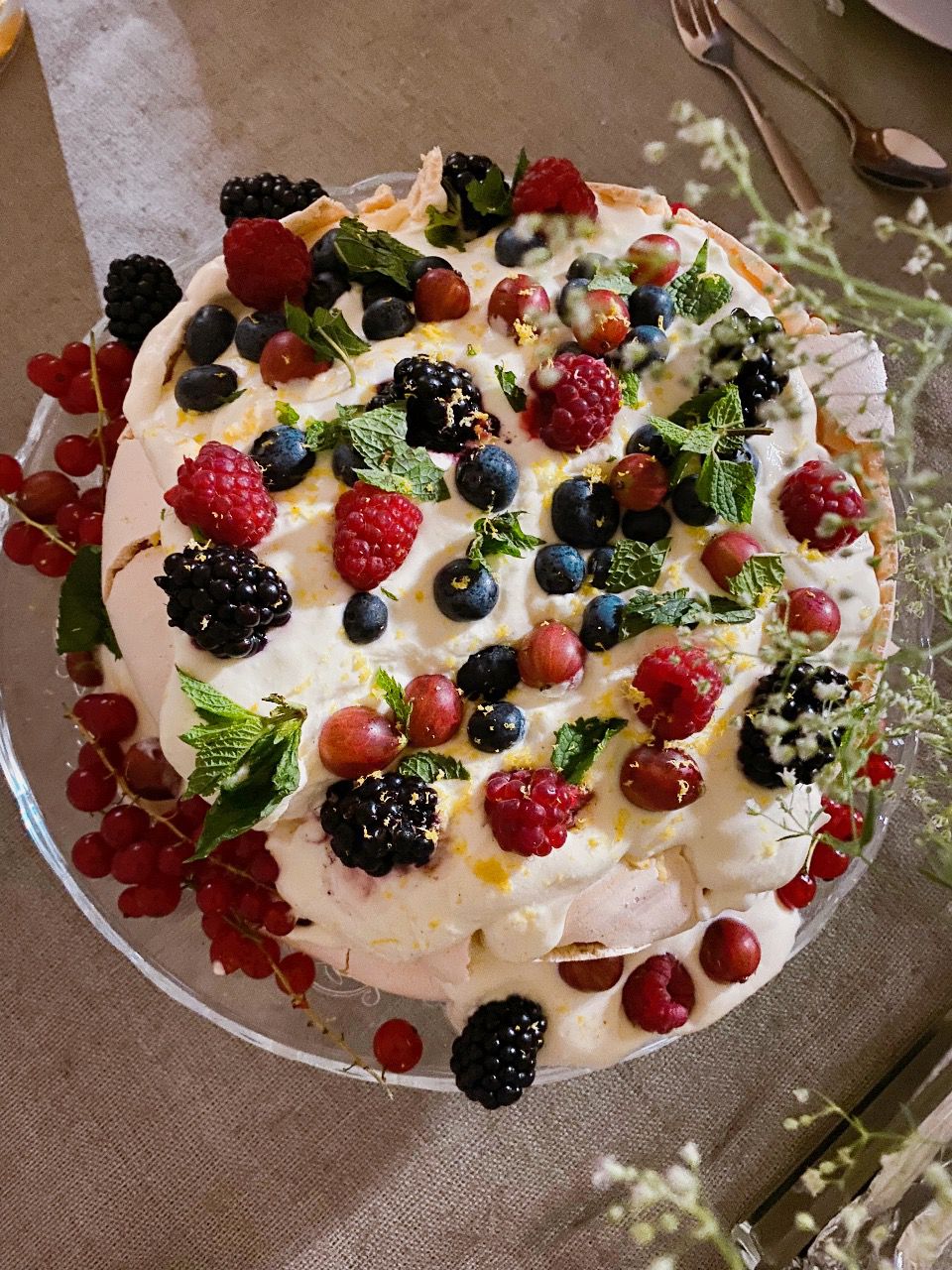Paul | Pommes | Pimms
As part of the exhibition Layup by Paul Czerlitzki, the evening Paul Pommes Pims took place at Salon Kennedy – an experiment that merged art, materiality, and social interaction in a shared space. The title, a humorous nod to the “three P’s,” reflected the equivalence of art, everyday life, and ritual, setting the stage for an event in which all elements – artwork, space, food, and guests – were in constant interplay.
The evening began with Pimm’s – a drink that changes over time: clear liquid interspersed with fruit, slowly releasing its flavor, causing the surface to cloud. A process of dissolution and enrichment, it became a delayed image, constantly reassembling itself with each passing minute. Paul Pommes Pims was not merely an extension of the exhibition but a deliberate artistic gesture, in which the act of eating itself became an interactive transformation.
The table, upon which the dinner was served, was more than a mere dining surface: it became the artist’s canvas. Guests took their seats, touched the table, and left traces – their presence became part of an ongoing work, not materialized in a final object but existing in the process itself. This idea, in which the audience becomes an active participant in the creation, mirrored Czerlitzki’s own practice, where layers, overlays, and manipulations accumulate over time. The traditional distance between artwork and viewer was dissolved, and the evening itself became an open work.
The culinary elements of the evening echoed Czerlitzki’s formal and material strategies. The cucumber soup and tomato gazpacho, served in test tubes, shifted perception: clear, separated liquids whose consistency recalled a painter’s surface, only fully understood in the interplay of the senses. The artichoke, peeled leaf by leaf, explored the slow approach to a core – a revelation through action, much like Czerlitzki’s works, where hidden structures emerge as layers of paint are uncovered.
The main course continued this idea: ten kilograms of freshly fried, ultra-thinly sliced fries, served in a chaotic heap on two large mirrors. The fries formed an assemblage of repetition and variation, without fixed structure – a mass constantly reshaped with every movement of the guests. The mirrors amplified this effect, making the fries appear to cascade infinitely, creating a visual depth that shifted with each guest’s interaction. A direct reference to Czerlitzki’s works, where layering, overlapping, and reflection play a central role. The fries, as a visual construct, only broke down and transformed through the collective act of sharing and touching – a fleeting composition shaped by the act of use rather than composition.
The Pavlova as dessert embodied a layering process – a surface that collapsed and dissolved when the spoon entered. A seemingly solid image, it fragmented in the moment of interaction. The dessert was a sweet delay, as Duchamp might describe it – a construction of layers that slowly unfurled, revealing and changing over time. This fragile surface, like Czerlitzki’s paintings, exists between revelation and concealment. The layering of the Pavlova mirrored the logic in Czerlitzki’s works: material as accumulation, whose surfaces tell the history of their formation.
The minimalist setting of the evening emphasized these interactions. The monochromatic color scheme of the space intensified the presence of the artworks, while the structure of the dinner echoed the open nature of the exhibition. The boundaries between observing and acting, object and social interaction, were consistently dissolved – an extension of the questions raised in Layup through different means.
Paul Pommes Pims was less a celebration than a deliberate gesture – a moment where artistic processes, social rituals, and material converged in an open play of transformation. The guests – collectors, artists, media representatives, and museum professionals – became active participants in this process. The fries on the mirrors were not only a culinary element but an archive of the touches and interactions of the evening, slowly changing over time. Much like Czerlitzki’s works, where each layer overlaps and the image oscillates between presence and memory.
all images © THE LUV COLLECTIVE
